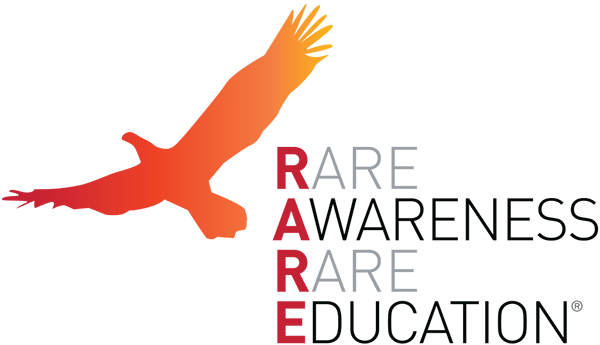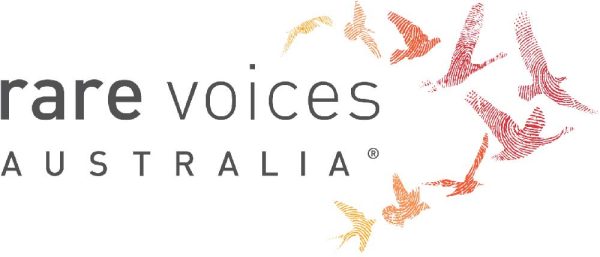Localised Scleroderma
Quick Search
- Summary
- Synonyms and Classifications
- Symptoms
- Disability Impacts
- Cause and Inheritance
- Diagnosis
- Treatment
- Clinical Care Team
- Clinical Care Guidelines
- Emergency Management
- Research
- Rare Disease Organisation(s)
- Lived Experience
- Support Services and Resources
- Mental Health
- Other Information
- Useful Links for Healthcare Professionals
Summary
Localised scleroderma is a type of scleroderma, an autoimmune condition that affects connective tissues, which joins and supports other tissues and organs in the body. ‘Scleroderma’ comes from the Greek words ‘skleros’ (hard) and ‘derma’ (skin), as this condition is often characterised by the hardening or thickening of skin.1 This is caused by a reaction of the body’s immune system resulting in too much production of collagen, an important protein of the connective tissue. This overproduction of collagen can lead to scarring and damage.1
Whilst other types of scleroderma may affect the skin and internal organs, localised scleroderma is limited to the skin and in some cases, the tissues or muscles beneath the skin.1,2 It rarely affects the internal organs and will not progress to the systemic form of scleroderma.1
Localised scleroderma is characterised by the appearance of areas of hard and dry skin on the hands, face, arms or legs, followed by plaques or wide strips depending on the subtype of condition. This can occur on one side of the body, affecting symmetry of the face and limbs.3 Localised scleroderma can also affect the mobility of joints.
The two subtypes of localised scleroderma are:
- Morphea – presence of round or oval plaques, often with a white appearance and red rim. It is more common in adults and is not always permanent.3
- Linear scleroderma – presence of wide strips, mainly in the face, chest (thorax), arms and legs. It can also affect the fat and muscles under the skin and lead to muscle wasting (atrophy).4 It is more likely to affect children (juveniles) than adults and tends to be more severe than the morphea subtype.1,3
Synonyms and Classifications
Synonyms: morphea, localised morphea, localized fibrosing scleroderma.2,3
Universal rare disease classifications provide a common language for recording, reporting and monitoring diseases. Please visit the Rare Disease Classifications page for more information about these internationally recognised classifications.
Symptoms
Areas of hard and dry skin may appear on the hands, arms, legs, or face, followed by plaques or wide strips depending on the subtype of condition.3 In the morphea subtype, round or oval plaques, usually white and with a red rim are observed. In linear scleroderma, there are wide strips mainly in the face, chest (thorax), arms and legs. The white strips may present on the face and scalp as a scar-like appearance as if struck by a sword/sabre (en coup de sabre).1-3 Muscles, fat tissue and skull may also be affected in linear scleroderma.2
Growth of limbs in children and mobility of joints may be affected in localised scleroderma.3 Unlike in the systemic form of scleroderma, there is usually no observation of Raynaud’s phenomenon (narrowing of blood vessels leading to decreased blood flow and symptoms such as numbness in parts of the body) in localised scleroderma.1-3
Disability Impacts
Rare diseases are often serious and progressive, exhibiting a high degree of symptom complexity, leading to significant disability. Majority of the estimated two million Australians living with a rare disease meet the Australian Government’s definition for disability (in accordance to the Australian Public Service Commission and Australian Bureau of Statistics), and many experience severe and permanent disability impacts. If you or someone you care for is experiencing disability-related impacts from a rare condition, please speak with a health or disability professional for advice. Information about relevant disability support can be found at the RARE Portal’s Disability Support Information page.
Cause and Inheritance
Scleroderma is an autoimmune condition that causes the body to overproduce collagen. The exact cause of the autoimmune reaction is unknown.
Diagnosis
Diagnosis of scleroderma may be made based on clinical examination of symptoms/disease presentation and medical history.
For localised scleroderma, a skin biopsy may be used to detect for accumulation of collagen, thickening of blood vessel walls, and white blood cells around the vessels.3
Antinuclear antibodies that are normally present in individuals with systemic scleroderma are usually not found in people with localised scleroderma.1
Please speak to your medical team to learn more about the available diagnostic pathways for localised scleroderma.
Treatment
There is currently no curative treatment for localised scleroderma. Treatment is targeted at managing symptoms (symptomatic management) and involves a multidisciplinary care team. This may include different types of medication to suppress the immune system and to treat specific symptoms. Physiotherapy and exercise may help with joint mobility and muscles.1-3
Please speak to your medical team to learn more about the possible treatment or management options for your condition. Treatment will depend on an individual’s specific condition and symptoms. It is also important to stay connected to your medical team so that you can be made aware of any upcoming clinical trial opportunities.
Clinical Care Team
Clinical care for rare diseases often involves a multidisciplinary team of medical, care and support professionals. Please note that the information provided here is as a guide and that RVA does not necessarily monitor or endorse specific clinics or health experts.
Healthcare professionals involved in the treatment of localised scleroderma may include general practitioners (GP), rheumatologists, dermatologists, neurologists, wound care nurses, physiotherapists, and psychologists.The need for different healthcare professionals may change over a person’s lifetime and extend beyond those listed here.
The Australian Scleroderma Interest Group (ASIG) is a collaboration of rheumatologists who operate multidisciplinary scleroderma centres around Australia.
- ASIG: Centres lists the available scleroderma centres around Australia
- ASIG: Screening Centre Locator shows available scleroderma screening centres by map
Clinical Care Guidelines
Consensus-based recommendations for the management of juvenile localised scleroderma was developed, and published in 2019, by a committee of paediatric rheumatologists from 11 countries, including Australia.
Emergency Management
Individuals living with rare diseases may have complex medical issues and disabilities, which are not always visible. It is often useful to refer to their medical history as well as personal information such as a medical card, doctor’s letter, or if available, a rare disease passport, for relevant information.
The following hospital care plan documents have been published by Scleroderma Australia, with information produced in collaboration with Scleroderma/Lupus Resource Centre at the Royal Newcastle Hospital, NSW:
Research
Information about research on scleroderma in Australia can be found at Scleroderma Australia: Australian research into Scleroderma.
The Australian Scleroderma Interest Group (ASIG) is a collaboration of rheumatologists, who in addition to operating multidisciplinary scleroderma centres around Australia, have designed the Australian Scleroderma Cohort Study (ASCS), aimed at creating a national database about people with scleroderma and mixed connective tissue disease (MCTD). They have also established a bio-bank to collect and store biological specimens from patients. More information about the ACSC and the bio-bank can be found at ASIG: ASCS Demographic & Biobank.
There are specific considerations around participating in rare disease research, including clinical trials. It is important to be mindful of issues such as data privacy, research ethics, consent and differences in research regulations between Australia and other countries.
If you are interested in finding clinical trials for your condition, please visit the following websites; however, there may not be any clinical trials available:
It is best to discuss your interest in any clinical trials with your medical team to determine suitability and eligibility.
Please note that RVA does not necessarily monitor or endorse each group/organisation’s operational governance and activities.
Rare Disease Organisation(s)
Australian Organisation:
Scleroderma Australia
Website: https://www.sclerodermaaustralia.com.au/
Scleroderma Australia is the national representative voice in supporting the scleroderma community across Australia, with its governing committee made up of delegates from different states. There are different state organisations that provide support to people living with scleroderma in different states in Australia, including:
Please note that RVA does not monitor or endorse each group/organisation’s operational governance and activities. When engaging with a group, please consider the information on the RARE Portal’s Finding Helpful Peer and Community Supports page.
Lived Experience
Localised scleroderma vary between individuals, and each person’s experience is unique.
If you would like to share your personal story with RVA, please visit the Rare Voices Australia: Share Your Story page. RVA will consider your story for publishing on our website and inclusion on the RARE Portal.
Support Services and Resources
Scleroderma Australia: Telehealth Pathways Nurse is a free of charge service to help individuals living with scleroderma to navigate Australia’s healthcare system.
Scleroderma Australia: Understanding Scleroderma and the NDIS provides information to help people with scleroderma apply for funding through the National Disability Insurance Scheme (NDIS) for support and services.
A number of informative brochures that explain aspects of scleroderma for medical professionals, people living with scleroderma, their families and friends can be found at Scleroderma Australia: Resources (Free brochures and information).
For information on available government and social services that provide support for individuals with a rare disease, please visit the National and State Services pages.
Mental Health
People living with a rare disease, including families and carers, often face unique challenges such as diagnostic delays, misdiagnoses, limited treatment options, and limited access to rare disease specialists and support. These challenges may impact people’s emotional wellbeing and quality of life. Many people find it helpful to seek mental health and wellbeing support to cope with ongoing stress and uncertainty. Connecting with people who have shared experiences through a support group may also be helpful. Information about relevant mental health and wellbeing support can be found at:
- Mental Health and Wellbeing Support for Australians Living with a Rare Disease
- The National and State Services pages underneath the ‘Mental Health’ sections listed
Other Information
Further information on localised scleroderma, or general information on scleroderma, can be found at:
Useful Links for Healthcare Professionals
- Scleroderma Australia: Morphoea/Localised Scleroderma
- Scleroderma Australia: Systemic Sclerosis and the skin
- Scleroderma Australia: Resources – includes other brochures with information relevant to medical professionals
- Recognising skin manifestations of rheumatological disease (article in Australian Journal of General Practice)
- Orphanet: Localized scleroderma
- Human Phenotype Ontology (HPO): Scleroderma (HP:0100324)
References
- Scleroderma Australia. Understanding and Managing Scleroderma Seventh ed. 20214. 36 p. https://www.scleroderma.org.au/uploads/1/3/3/1/133121601/scleroderma-aust-understanding-and-managing-scleroderma-edition-7-web-3.pdf
- Genetic and Rare Diseases (GARD) Information Center. Localized scleroderma. Accessed 16 October 2023. https://rarediseases.info.nih.gov/diseases/7058/localized-scleroderma
- Orphanet. Localized scleroderma. Accessed 16 October 2023. https://www.orpha.net/en/disease/detail/90289
Contributors
This page has been co-developed by Rare Voices Australia (RVA)’s RARE Portal team in consultation with Scleroderma Australia.
If you are aware of any additional information that may benefit stakeholders with an interest in this page, or if you notice any broken links or inaccurate information, please let us know via the Contribute page.

